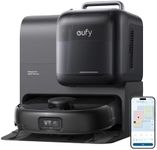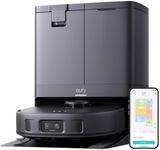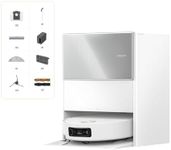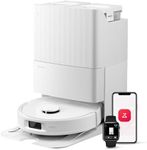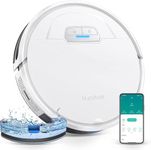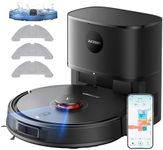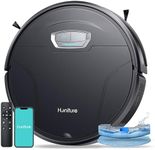Buying Guide for the Best Robot Vacuums With Mop
When choosing a robot vacuum with a mop, it's important to consider your specific cleaning needs and the features that will best suit your home environment. These devices are designed to automate the cleaning process, saving you time and effort. However, not all models are created equal, and understanding the key specifications can help you make an informed decision. Consider the size of your home, the types of flooring you have, and any specific cleaning challenges you face, such as pet hair or high-traffic areas.Suction PowerSuction power is a measure of how effectively a robot vacuum can pick up dirt and debris. It's important because stronger suction means better cleaning performance, especially on carpets and rugs. Suction power is usually measured in Pascals (Pa). Low suction (around 1000 Pa) is suitable for hard floors, medium suction (1500-2000 Pa) works well for mixed surfaces, and high suction (over 2000 Pa) is ideal for homes with carpets or pets. Consider your flooring type and the amount of dirt typically present in your home when choosing the right suction power.
Mopping FunctionalityThe mopping functionality of a robot vacuum refers to its ability to wet mop floors in addition to vacuuming. This is important for maintaining clean hard floors. Some models have a simple water tank and cloth, while others offer advanced features like adjustable water flow or vibrating mop heads for better scrubbing. If you have mostly hard floors, look for a model with a robust mopping system. If your home is a mix of carpets and hard floors, ensure the robot can easily switch between vacuuming and mopping modes.
Battery LifeBattery life determines how long a robot vacuum can clean before needing a recharge. This is crucial for larger homes, as a longer battery life means the robot can clean more area in one go. Battery life is typically measured in minutes. Short battery life (60-90 minutes) is sufficient for small apartments, medium battery life (90-120 minutes) suits average-sized homes, and long battery life (over 120 minutes) is best for large homes. Consider the size of your home and how often you want the robot to clean when evaluating battery life.
Navigation TechnologyNavigation technology refers to how a robot vacuum moves around your home and avoids obstacles. It's important because efficient navigation ensures thorough cleaning and prevents the robot from getting stuck. Basic models use random navigation, which can miss spots, while advanced models use sensors or cameras for systematic cleaning patterns. If you have a complex floor plan or many obstacles, opt for a model with advanced navigation technology to ensure complete coverage and efficient cleaning.
Dustbin and Water Tank CapacityThe dustbin and water tank capacity determine how much dirt and water the robot can hold before needing to be emptied or refilled. Larger capacities mean less frequent maintenance, which is convenient for busy households. Dustbin capacities range from small (300 ml) for light cleaning to large (600 ml) for homes with pets or heavy dirt. Water tanks also vary, with larger tanks allowing for more extensive mopping sessions. Consider your cleaning frequency and the amount of dirt typically collected to choose the right capacity for your needs.
Smart FeaturesSmart features in robot vacuums include app control, voice assistant compatibility, and scheduling. These features are important for convenience and customization of cleaning routines. Basic models may only offer manual controls, while advanced models allow you to control the vacuum remotely, set cleaning schedules, and even receive cleaning reports. If you value convenience and tech integration, look for models with robust smart features. If you prefer simplicity, a model with basic controls may suffice.
